INTRODUCTION
“Slow travel” offers a refreshing alternative to the rushed, checklist-style tourism that’s common today. It’s about savoring the journey, connecting deeply with places and people, and traveling in a way that benefits the traveler, the environment and local communities.
To explore this approach, we spoke with Carl Honoré, often called the “godfather of the Slow Movement”. Carl is the author of the international bestseller In Praise of Slow, and a leading voice on how slowing down can improve many parts of our lives, including travel.
In this interview, Carl explains what slow travel truly means: how it differs from conventional fast-paced tourism, why it matters for travelers and the places they visit, and how it aligns with sustainable travel. He also dispels common misconceptions and emphasizes that slow travel is about doing things at the right speed, not simply moving at a slower pace.
EMBRACING SLOW TRAVEL: Q&A WITH CARL HONORÉ
Note: The following responses have been edited for brevity while preserving their original intent.
1. THE “SLOW” PHILOSOPHY: A MINDSET FOR MODERN LIFE AND TRAVEL
Hi Carl, thanks so much for taking the time to chat with us. Before we get into travel, I want to talk about the concept of slow and fast as you use it in your book In Praise of Slow. In that book, you define slow and fast as philosophies, not just rates of change. So can you tell us, first of all, about slow philosophy in general?
Often the best way to explain “slow” and the slow philosophy is to start off by saying what it’s not. People sometimes still assume it means everything’s got to be done very slowly. And it’s not that at all. I’m not an extremist of slowness. I love speed. Sometimes faster is better.
Slow is about finding the right speed. Musicians have this lovely term, tempo giusto. It means the correct tempo for a piece of music. I think that gets at what slow is all about. It’s about finding the right pace, the right rhythm, the right cadence, and the right speed, for the moment.
It’s a mindset. It’s quality over quantity. It’s being present and in the moment. It’s doing one thing at a time.
I think of it ultimately, in its most simple form, as doing everything not as fast as possible, but as well as possible. Which at its core is a very simple idea. But at the same time, it’s an immensely powerful one. Because the culture is constantly pushing us to do the opposite: to do everything as fast as possible, and not worry so much about how well we do it.

With the slow philosophy, you flip that 180°, and try to mine every moment for all its richness and meaning and depth. You can only do that with a slow mindset, which is utterly opposed to the modern mindset. But people are so conditioned to expect everybody to push them to do everything faster.
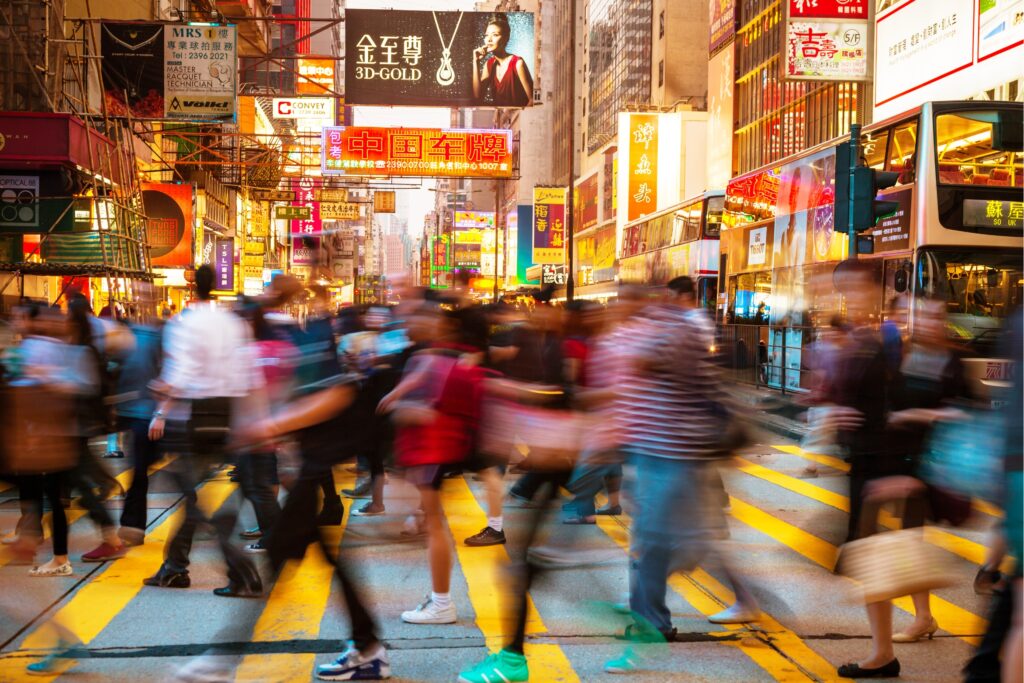
And doing everything faster is folly on an industrial scale. It takes such a toll on every aspect of our lives: individually on our health, our relationships, everything; and then collectively on the planet. Because I think the “go faster, do everything at once” culture is one of the motors of turbo-consumerism and turbo-capitalism. Which of course are chewing up the planet and everybody on it at an extraordinary and gruesome pace.
Can you tell us a little bit about the slow mindset as it relates to travel, and how that differs from conventional travel?
Slow is a very useful lens for travel. A lot of travel is spoiled by what I think of as the four horsemen of the modern apocalypse: stress, busyness, impatience and distraction. Slow removes all of those from the equation.
It takes all the things we love about travel: pleasure, relaxation, discovery, adventure, meaning, and amps them up. Slow enriches everything. It’s like going from black and white to Technicolor.
So the key ingredient of slow travel, for me, is just applying the slow philosophy. Being present and open and alive to the moment. Firing up all five of your senses instead of skimming across the surface. Surrendering to the rhythms of what’s going on around you, rather than trying to impose your “faster is better” rhythm.

When you broaden the lens even further, connection is an important element. With “speed-a-holism”, we become disconnected. We get stuck inside our heads, everything is concentrated in our prefrontal cortex, and there’s a disconnect with our bodies.
Slow allows you to sink back into the body, and to interact with the world through the senses: sight, smell, touch, sound, taste.
Another element of connection that’s an important part of slow is connection with place. Slowing down to connect with other people and the local culture. Creating moments and memories and relationships. The kind of things that don’t happen when you’re rushing around, packed up to the eyeballs with a checklist of 100 things to do every day.
And then of course there’s the environmental angle. It’s one of the difficult questions in the conversation about travel: Is any type of travel okay now? That’s a question that those of us who travel for work, or those who just love to travel, have to wrangle with.
But a big part of slow travel is about treading lightly. So that your actions are not annihilating local culture, impoverishing local people and running down the local environment.
2. SELLING SERENITY, DELIVERING STRESS: THE PARADOX OF MODERN TRAVEL
One observation about what you said on this idea of slowing down: I think that’s what we look for in travel. Of course, there is that sort of, “If it’s Tuesday, this must be Rome” style of traveling, and people do it. But I’m not sure it’s what they want. Because it’s not what the travel industry sells people on.
I interviewed Ged Brown of Low Season Traveller a little while back, and he talked about the discrepancy between the imagery that the travel industry uses to advertise a destination, and what people often get as an experience.
That was in the context of low- vs. high-season travel, but it’s true in this context, too. When you look at the pictures that convince people to book a vacation, it’s a beautiful beach, or a nice meal, or gorgeous scenery and fascinating culture. It’s all about making you want to step into that image you’re looking at. And if you could jump into those images, it’s about taking your time and savoring the experience.
It’s a weird paradox of modern travel: it’s sold to us as a slow experience, but what we get is often the opposite of that. You look at the advertising, and it shows people doing yoga on beaches or sitting around the campfire roasting marshmallows. Because what we’re looking for from our travel experiences is very much in keeping with slow. That’s what nourishes us. That lights us up. That makes us want to travel.

And yet, what happens when we get to the destination? We have a checklist with a million things to do. And we get home more tired than when we left, wondering why we need a vacation to get over our vacation.
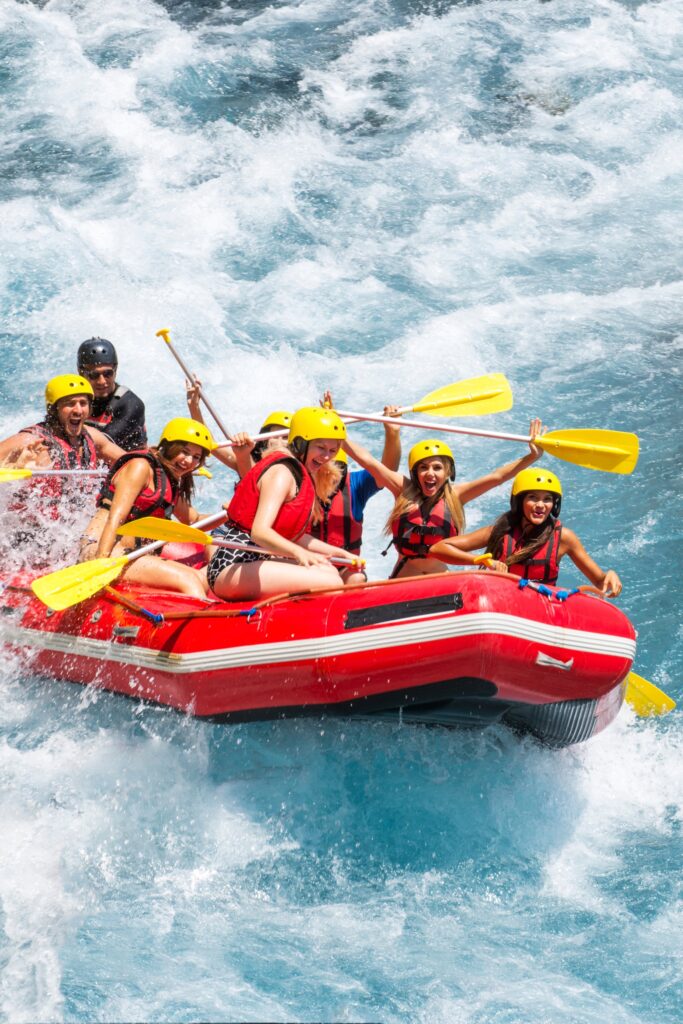
3. COMMON MISCONCEPTIONS ABOUT SLOW TRAVEL
Are there any misconceptions about slow travel?
The main one is that people think it must always involve physically slow, gentle activities. It’s not that at all.
Sure, low-adrenaline activities can be part of slow travel. But so can a whitewater rafting trip. It depends how you approach the whitewater rafting.
Because slow is a mentality that you can take with you into anything you do.
For example, I’m a big player of sports. The slow mentality is hugely powerful in sports. The greatest athletes all practice slow. They know when to put their foot on the ball and stop the game, look around, and take a breath.
The greatest athletes have always understood that, in order to deliver on a stage where you have to move very fast, you often need a kind of internal calm.

But when people think about the slow mindset, they can get confused and just think ”slow travel must mean only doing yoga, only five-hour long meals.”
No. That’s one version of slow. But everybody will have their own version. If you bring that slow spirit of connection, of being present, alive and open to the moment, you can apply that to any activity.
4. LEAVING PAID TIME OFF ON THE TABLE
Let’s talk about vacation time or allowance. In In Praise of Slow, you mentioned that people don’t take the full amount of vacation due to them because of what you call “vacationitis”. Is that still true?
Very much. There’s research showing that nearly 50% of Americans are still not taking their full vacation allowance. In the UK, it’s 64% or 65%.
You might think, “Why is that? Surely Americans are more workaholic than anyone.”
And they probably are. If you had an international league table of who takes the least time off, Americans are probably near the top. It’s the one country in the developed world that doesn’t have statutory paid holiday. Everywhere else has had it in some form since the the 1930s.

I think that the reason the figure is higher in Britain is that people get more holiday time to begin with. So it’s harder for them to blow through it. If the average Brit gets, say, four or five weeks a year, and an American gets a week or two, you can see how the arithmetic works out.
But the bottom line here is that this is still very much a phenomenon of the modern world. People are not even exercising this basic human right, which is time off. That’s a system that’s broken. That’s a culture that’s limping along in the wrong direction.
5. GEN Z AND THE FUTURE OF TRAVEL, REST AND WORK-LIFE BALANCE
I wonder though, if that’s going to change a bit with Gen Z.
I feel hopeful about that. Gen Z is one of my great sources of optimism. I do a lot of work around the world, and I’m often in companies and doing events. The people who come up to me first are often HR. And they say, “This new generation coming into the workplace has different priorities.”
Gen Z is looking at my generation and saying, “Do I want to work a 90-hour week, sacrifice my health, my soul, my dreams, for a company that’s going to throw me out as soon as the stock market has a downturn? Or for a pension pot that I may never even get to use, or won’t be that big anyway?”
And so Gen Z is saying, “I want to work hard. I want to do well. But I also want to do good.”
That is an important nuance. They want their work to have meaning and purpose, and for the companies they work for not to be wreaking havoc on society.

They also want to have a better balance between working and down time.
So what I hear from HR departments all over the Western world is young people saying, “If I work for this company, I’ll smash it out of the park for you.
“But I want to go home at 6pm to give my baby a bath. And I don’t want to work 20 hours over the weekend.
“If there’s no way for me to fit into this company without doing that, I’ll go elsewhere. I’ll go to another company, or I’ll start my own company. I’ll get my own hustle, which allows me to work on my own terms.”
I think the pandemic gave a boost to that mentality.
In many ways, what we experienced during that period made people rethink their outlook. It was a nightmare, but it also allowed people to rethink the place of work in their lives, how they would work, when they would work, and for whom.
It was a global workshop in slowness. It gave a lot of people a first taste of what it was to slow down. It took away FOMO, because there was nothing happening to miss out on. And now Gen Z is taking the ball and running with it.
So I’ve got a lot of faith in this rising generation. It’s quite interesting to see older generations, including mine, appalled by this. They kind of admire it, but they’re also appalled.
They admire it because they think, “I never would have asked for time off. The culture was you just put your head down and you just went for it.”
But they’re also sort of thinking, “That’s not the way things work. I didn’t get to do that, so why should you? I didn’t see my kids growing up. Why should you get to?” Which is the worst kind of response, but it happens.
But I’m really hopeful about Gen Z. The future is bright.
6. SLOW TRAVEL THROUGH THE LENS OF SUSTAINABILITY
In your interview with Michael Colville-Anderson, you mentioned that slow travel should have a social justice aspect, a local aspect and an environmental aspect. I’d like to go into a little bit more detail about how slow travel fits with these three pillars of sustainable tourism.
I suppose the starting point is: less is more.
That may be a hard pill to swallow, but many of us probably need to do a bit more triage when it comes to responsible travel. We need to consider “Do I need to travel to this place in that way? Could I do this virtually? Could I do it next year? Could I just not do it at all?” These are questions that are very seldom part of our checklist.
When we think about travel, we’re not thinking about whether we should do it or not. We’re generally only thinking about all the reasons we should.
I don’t want to be a buzz killer. I love to travel. Anytime I turn down a travel opportunity, for whatever reason, I feel it. But I think just in terms of sheer numbers, especially as more and more people reach middle class standards around the globe, there’s only so much the Earth can take.
I’m starting to see this in places that I’ve been visiting for years, that are now just overrun with tourism. Just ruined.
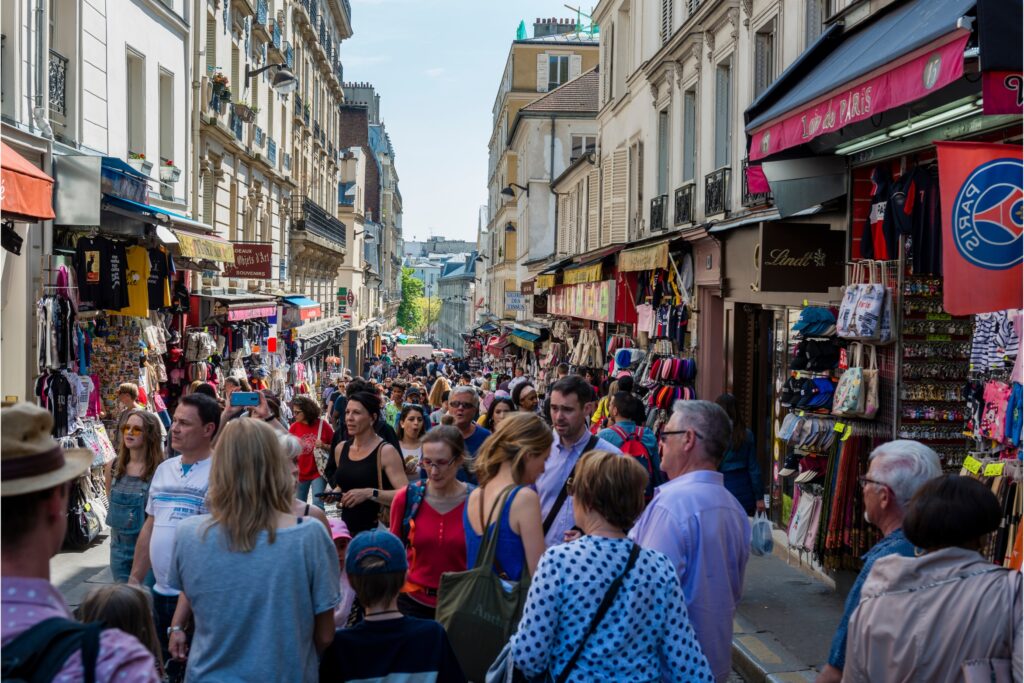
So I myself have had to trim my sails a little bit, and I’ve chosen not to go to certain places that I know are now suffering from overtourism.
Which hurts. But I don’t want to contribute to making the problem even worse by being there. So I think we need to pause and ask ourselves, “Is taking this trip the right thing to do?” That should be part of the equation. Not just, “How much will it cost?” But also, “Should I go in the first place?”
And then I think so much of what’s grim about modern travel, particularly business travel, but I’ve seen it seep into leisure travel as well, is homogenization. Globalization writ large. It’s all about removing local color, texture, uniqueness, and making everything a package.
Social media has brought this forward as well. Everybody’s seeing the same reels, so they’re decorating their flats in the same way, they’re serving the same fusion foods.
I’m old enough now to remember traveling in the late ‘80s. Each place was so different. But now, in the service of efficiency and scale, we’ve killed the thing we love. Because the whole point of traveling is to go somewhere fresh and different and new and challenging. And if you go somewhere that’s exactly the same as where you are, but the weather’s a bit better, or you don’t have to work while you’re there, that’s not enough. That shouldn’t justify it.
So I think we need to bring back the importance of “local”. That’s a big ask, because it means unwinding the way the whole travel industry works. It means making it much more built towards having a local experience. It means keeping the money spent in the local area, where it builds up and nourishes the culture, instead of siphoning it away through multinationals.
You have people writing whole theses on how to do that. The actual nuts and bolts is beyond my pay grade. But I think that’s the general principle we need to get back to. We have to get away from this idea that everything is the same everywhere you go. A: that’s not true travel; and B: it’s unsustainable. It’s so bad for the planet. It’s bad for local culture. And it’s boring.
7. SLOW TRAVEL AND TRANSPORTATION
We’ve talked a lot about slow travel with a focus on the destinations themselves. We should also talk about how we get to those places: transportation through the lens of slow travel.
When the mode of transport to get from wherever you are to wherever you’re going is slow, it’s a completely different experience. The journey itself becomes part of the travel experience.
You get a sense of change. You see the landscape evolving and shifting as you move through it. You feel the temperature changing. You start to notice different smells. The sense of place becomes so much more important, because you’re immersed in it.
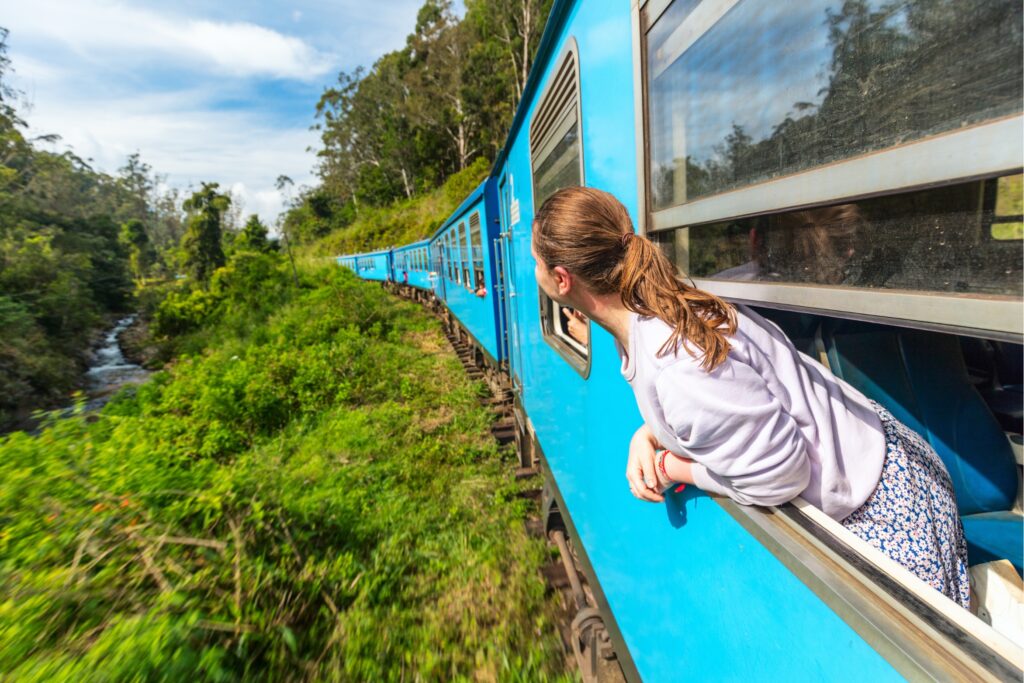
One of the things that’s discombobulating about fast travel is that you get on a plane in an airport in, say, London, get out in a very similar-looking airport in southern Italy, for example, and there’s no frame of reference for adjustment.
You’ve just been hurled from one place to another, flying in this boring bubble, where time feels weirdly suspended.
And that’s the paradox of flight. You’re moving faster than at any other time in human experience, and yet it’s one of the most boring places in the world to be. Which is a reminder that speed does not always equal excitement. It gives the illusion of excitement and diversion and interest, but it’s often a false god. Flying reminds us that speed can be tedious. Traveling by plane is just something to get through.
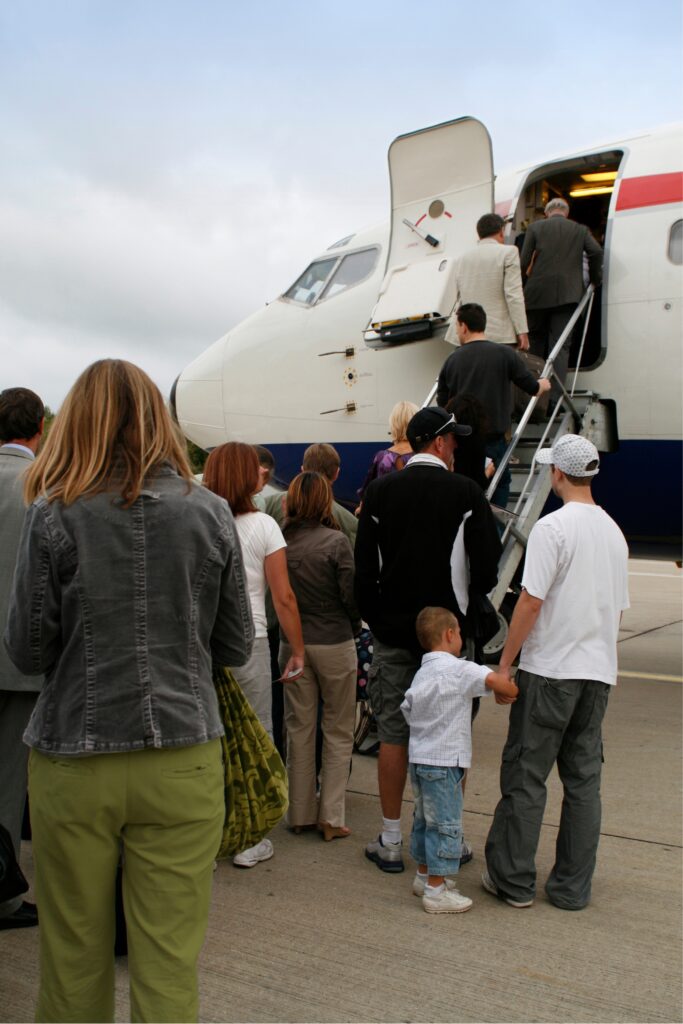
I’ve heard that, for example in the ‘60s, flying was an experience. It was a sort of luxury to travel by plane. Now, I get on a flight, and I dread it. I feel like I’m being herded. Actually, it’s not a question of feeling. I am being herded. Usually, I look for any other way to travel, and fly only as a last resort.
Whereas train travel can be a true joy. I look back on all the travel I’ve done, and a lot of the most exciting experiences were on the way to my destination.
I went on the Orient Express a little while ago, which is just amazing. Just as a comparison: I’ve flown hundreds of times between London and Italy, but I don’t remember any of those trips. But traveling on the Orient Express? I can remember every moment on that trip, which was a day and a half by train.
In Europe, they’re getting better at overnight trains. That sounds like a small thing, but I think it’s actually big. It’s a welcome change to move away from the “fly to Barcelona for lunch” ethos and go towards something where people are taking modes of transport, trains in particular, which are much kinder to the environment, but also have a built-in slow approach to travel.
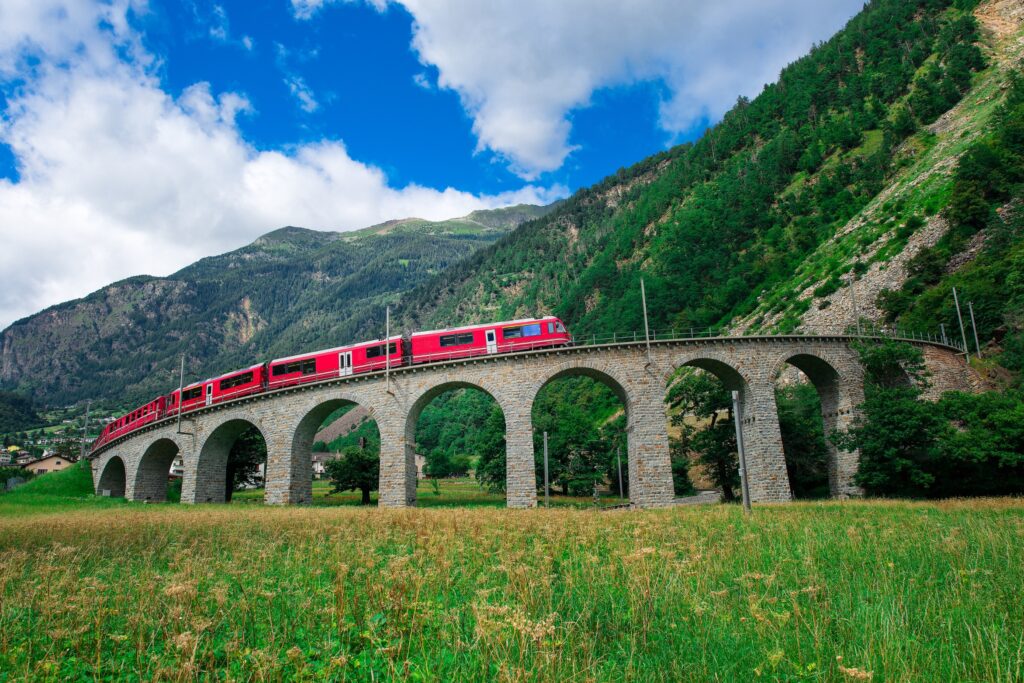
Another thing about air travel. Not only is speed boring, ultimately, but it’s selfish. There’s something about it that cuts us off from other people. We’re in our own little tunnels of acceleration.
I’ve noticed a change in the last few years. It used to be that during your flight, you talked a bit to the person beside you. Now you just don’t. People have their noise canceling headphones, they’re watching something on their phone, and there’s just no conversation. I’ve sat beside people for 10 hours on a flight and not exchanged a single word with them.
That never happens on a train, right? There’s something convivial about the motion, the shared experience, the changing views. The journey itself becomes a movable feast, in a way that plane travel never does.
8. THE FUTURE OF SLOW TRAVEL
Let’s talk a little bit about the future of slow travel. What do you see as its future, especially in this post-pandemic world, where people are increasingly aware of the need to travel more responsibly?
I do think that we will move more towards slow travel. People are saying “Enough is enough. This whole ‘fast travel’ paradigm is not working. It’s not making anybody happy. It’s bad for the planet. There must be a better way to travel.”
Even just looking at some of the trends in the travel industry, you can see this. People are now spending longer in one place than they did before. Instead of doing “Today, we’re in Rome”, checklist-style travel, they may spend four days in Rome. Something you also saw more of after the pandemic is multi-generational travel.
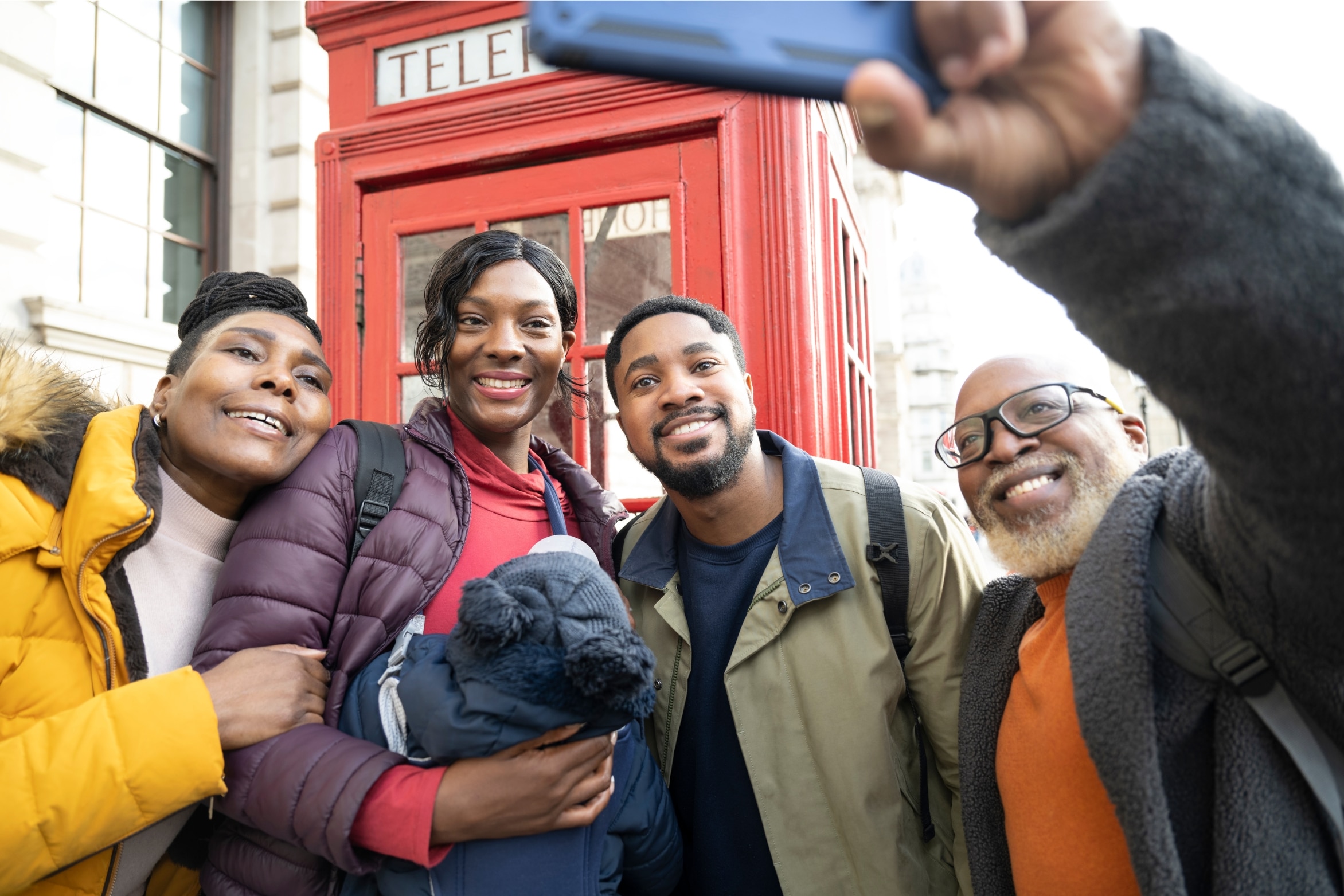
That fits into some of my work on aging and longevity, but it also fits in with slow. And families often find it easier to plug in to a new place, because they can get into an area with other children. So it can help with forging a local connection.
We’ve already talked about the move away from flying, and using other modes of transport to get places. I think we’re starting to see more of that.
I also think we’re moving towards a world where we travel less, but better. Where we take fewer trips, but do them with a slow vibe.

And also, I think there’s a flip side to all this, which is that people think travel means leaving your city or your country. But you can travel in your hometown.
How well do any of us know our own towns and cities? Not very well. All around us is this smorgasbord of life to explore and uncover. I think we’re going to see a lot more people staying closer to home for travel.
Taking that to its logical conclusion is just thinking, “I can apply this slow approach to anything: going down to the local park with the children, or spending time in the back garden.”
That sort of outlook has always been there for people. But maybe that will be more prevalent in the future, as we spend less time hopping on planes.
About Carl Honoré

Carl Honoré is an author, speaker, and renowned advocate of the Slow Movement, a global effort to help people live and travel more mindfully.
His bestselling book In Praise of Slow explores the societal obsession with speed and how slowing down can lead to a better life.
Carl’s insights have also reached a broad audience through his TED Talks “In Praise of Slowness” and “Why We Should Embrace Aging as an Adventure.” These talks further explore the value of slowing down in various aspects of life.
Carl has written several books for adults and children, encouraging readers to rethink their pace and connect more deeply with the world around them.
His latest children’s book, Slow Adventures: Enjoy Every Moment (published as It’s the Journey Not the Destination in the UK) invites young readers to discover the joy of slow travel.
Carl believes travel should be meaningful, not rushed, and that slowing down helps us care more for the planet and for ourselves. His work continues to inspire individuals to reconsider the pace at which they live and travel.




